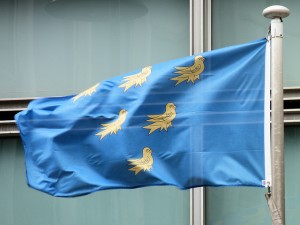
The formation of the two administrative counties of East and West Sussex dates from 1889. It was really only the official regularisation of a situation of fact dating from Saxon times when there already were two archdeaconries of Lewes and Chichester.
The area of the Sussex County (East and West Sussex) in 1878 was 1466 square miles (934,000 acres; East Sussex, 530,570; West Sussex, 401839). In 1961 it was recorded as being 1457 square miles (it is not known if the difference is due to an improved accuracy of the measurement or to a loss of 11 square miles).
The population has increased over time as follow:
Notes: 1871: (199,532 males; 217,924 females) / 1911: (299,188 males; 364,190 females) / 1961: (East Sussex, 665,904; West Sussex, 411,224)
Population in 1911:
| Males | Females | Total | |
| East Sussex | 110,745 | 131,401 | 242,146 |
| West Sussex | 83,283 | 93,025 | 176,308 |
| Brighton | 58,370 | 72,867 | 131,237 |
| Eastbourne | 21,809 | 30,733 | 52,542 |
| Hasting | 24,981 | 36,164 | 61,145 |
| Total | 299,188 | 364,190 | 663,378 |
The population of Brighton and Hove has changed with time as indicated below:
| 1801 | 1851 | 1901 | 1961 | |
| Brighton | 7,300 | 65,500 | 102,300 | 163,159 |
| Hove | 100 | 4,100 | 29,700 | 72,973 |
In 1961:
East Sussex had:
- 3 County Boroughs: Brighton, Eastbourne and Hastings
- 4 Municipal Boroughs: Bexhill, Hove, Lewes and Rye
- 6 urban districts
- 5 rural districts
West Sussex had:
- 3 municipal boroughs: Arundel, Chichester and Worthing
- 5 urban districts
- 6 rural districts
In the ancient times Arundel was a lonely and marshy place. It was located on a tidal estuary less than four miles from the sea, a marshland flooded at high tide with chalk promontories north and south that narrowed the plane, and allowed it to be crossed more easily. The river was not yet banked; it was very wide at high tide, and a narrow muddy bed at low tide. Remains of the Iron Age and of Roman settlements have been found, and there was probably a Saxon village here when the Norman invaded Britain. The Saxons named the River “Tarente” and that name remained until the 13th century. The origin of the name Arundel is not known. The best guesses are that:
- It comes from “hirondelles”, the French word for swallows, and that would make it Norman. It is a fact that birds are on Arundel’s coat of arms
- The Saxons called it “Erundellan” (dell or valley of the river Arun) that the Norman changed to Harundel. This is probably the correct origin of the name
